- Home
- Clive Cussler
The Rising Sea Page 25
The Rising Sea Read online
Page 25
“Highly unlikely,” Priya said with a glance toward Henley. “But if just five percent of the water trapped inside the transition layer is forced to the surface . . . sea levels will rise by two thousand feet.”
“Two thousand feet?” Rudi said.
Priya nodded.
“And how likely is a five percent discharge from this layer of rock?”
She shrugged. “Impossible to say. No one’s ever seen this before. We don’t know exactly what is happening. All we know is, it’s getting worse. The rise in the sea level has accelerated in the last six months, again in the last ninety days and once again in the last five weeks. As for predictions . . . the basic math is simple. A five percent discharge is far more likely than a ten percent surge. Four percent is more likely still. Three . . . two . . . one . . . take your pick. A one percent discharge is exponentially more probable than a five percent release. But even at that level—even if just one drop in a hundred is forced out of the transition layer—the sea level will still rise four hundred feet.”
Henley chimed in with more doom and gloom. “You’d lose every major coastal city in the world, half the landmass of South America, most of Northern Europe, large swaths of America especially, in the south and along both urban coasts. Not to mention the most densely populated swaths of Asia and India. Two billion people would be forced to relocate. But there will be nowhere to put them and nothing to feed them, even if they could find somewhere to call their own. And as if that’s not bad enough—”
Rudi cut him off. He didn’t need Henley launching into depressing detail about what would happen to humanity. He needed them to find a way to stop it. “Is there a way for us to put a halt to this upwelling?”
“We can’t be sure,” Priya said. “We’d have a much better idea of what’s possible if we knew exactly what the Chinese did down there, but there is a possibility that they’ve released something that can’t be put back in the bottle.”
Rudi studied her face. Determination was mixed with a sense of grim acknowledgment. Better than any of them, Priya knew there were forces that human effort and engineering just couldn’t overcome.
“Put all the data into a report,” Rudi said. “In fact, give me two reports. One with all the technical data and a simpler version that laypeople and politicians can understand. I’ll need them both within the hour.”
“Are you going to go public with it?” Priya asked.
“No,” Rudi said. “Something far more dangerous. I’m going to send the information to China.”
41
NAGASAKI
KURT STARED at the map with great intensity, as if by force of will he could make it reveal the destination of Han’s helicopter.
“The helicopter was traveling on this course,” Joe said, using the mouse to draw a line on the screen. “It flew right over this building and out over the harbor in this direction.”
The line ran to the southwest.
“Maybe they’re taking him to China,” Akiko suggested.
“Odd course to take, if they were,” Kurt said. “Shanghai is the nearest city and most likely destination, and that’s due west.”
“Too far away,” Joe said. “That was a small helicopter. Short-range model. Shanghai is more than five hundred miles away. It couldn’t reach the Chinese mainland from here. Not in one hop.”
“What about refueling?” Kurt asked.
Joe sat back. “I didn’t see anything to suggest it could refuel in midair, but that doesn’t rule out landing on a ship.”
“That’s what I was thinking,” Kurt said. “Which is why I brought up the ship tracker.”
At the touch of a button, the position and direction of every ship within a hundred miles of Nagasaki Harbor appeared on the screen. The map went out a hundred miles and could be expanded farther, if needed, but the problem became apparent rather quickly.
“There must be hundreds of ships out there,” Akiko noted.
“Doesn’t Han own a yacht?” Joe asked.
Kurt looked it up online. “Three, actually.”
“Seems like a good place to start.”
Kurt typed the identification numbers of Han’s yachts into the search window, requesting locations. He was given a worldwide map. “One yacht is in Monaco, one docked in Shanghai and the third is undergoing upgrades in Italy.”
“We can rule out his yachts,” Joe said.
Kurt brought the original screen back up. Typing quickly, he set a new search in place. Eliminating all ships under five thousand tons and deleting all vessels incapable of handling a helicopter. “That brings us down to forty-nine ships in a hundred-mile radius.”
“We can’t search forty-nine ships.”
“We can rule out some of them by nationality,” Kurt said, continuing to type. “Assuming Han wouldn’t land on an American- or European-flagged vessel cuts the number to twenty-six.”
“How many of them along that course line?” Joe asked.
Kurt tapped the keyboard and brought up Joe’s line once again. “None,” he said, surprised. “The closest ship is fourteen miles to the north and is headed into Nagasaki Harbor. Not out to sea.”
“The helicopter could have changed course,” Akiko said. “After all, it did shut off its lights.”
Kurt looked at Joe. “That seem odd to you?”
“Not if he didn’t want to be watched,” Joe said. “The only way I could track him was by the position lights. As soon as those lights went off, that bird literally vanished in the sky.”
“But how could Han or the pilot know you were following them?” Kurt said.
Joe tilted his head. “You’re right. They couldn’t possibly know. So why shut off their lights at all?”
Kurt had an idea. “How high were they?”
“Low,” Joe said. “Less than a thousand feet.”
“Were they climbing?”
“Not that I could tell. More like they were flying straight and level.”
Kurt turned back to the map.
“You have a theory?” Joe asked.
Kurt nodded. He zoomed back in on the course line. “I think they flew low to stay off Nagasaki radar. And they went dark not because they thought you were watching but because they didn’t want anyone to watch. And the only reason to fly like that is if you were going to touch down in sight of the mainland and you didn’t want anyone to see you do it.”
Kurt was looking for an island, not a ship. But there was no shortage of those either.
“Gunkanjima,” Akiko said.
Kurt and Joe turned her way.
“Battleship Island,” she explained. “Its real name is Hashima. It sits off the coast a few miles. The island was a coal mine. At one point, thousands of workers lived there. Miners and their families. The island became so built up, with concrete buildings and seawalls, that it resembled a fortress guarding the approach to the city. That’s how it got the nickname.”
She pointed to the island on Kurt’s computer screen. It was sixteen miles downrange from Han’s factory, but because the peninsula ran that way, the island was only a few miles off the coast.
Kurt had heard of Hashima. It was a crumbling relic of a bygone era, often listed as one of the world’s most haunting, abandoned places. “I thought they’d turned that island into a tourist trap.”
“They did,” Akiko said. “It was very popular until about a year ago. But then high levels of asbestos, arsenic and other poisons were discovered in the soil and the buildings. The tourists roaming through the city were stirring it up and breathing it in.”
Kurt pulled up an article on the mysterious island. “The federal government shut it down eleven months ago, three weeks after Han and CNR broke ground on the new factory. Something tells me that’s not a coincidence.”
“Coincidence is reserved for the trustworthy,” Joe said.
“Everyone else must live under a cloud of suspicion.”
Kurt double-checked the flight path, as Joe had recalled it. It went almost directly at Hashima Island, but . . . “There are other islands along the flight path,” Kurt noted. “Takashima and Nakanoshima.”
“Takashima is built up and populated,” Akiko told him. “There’s a museum on the island, along with small hotels and large homes.”
“Hard to land a helicopter there without disturbing the neighbors,” Joe said.
“Nakanoshima Island isn’t much more than a rocky outcropping,” she added. “There’s not even a good spot to land.”
Looking over the satellite image, Kurt agreed. “If they’re out there, they landed on Battleship Island.”
“The fact that it was closed to the public shortly after Han arrived seals it for me,” Joe said. “But why bother with an island lair at all? He’s got a sprawling, well-defended factory right here.”
“Because he has something to hide,” Kurt said. “Something he couldn’t risk being discovered during a Japanese safety inspection or by intrusive foreigners like us.”
“We could contact the authorities,” Akiko said.
Kurt shook his head. “A dead end. Han has friends in high places around here or he wouldn’t have gotten the island closed in the first place. All we’d accomplish is tipping our hand. They’d hide whatever they’re up to and feed Nagano to the sharks. We’re the superintendent’s only hope for rescue and that means we have to get ourselves onto that island and fast.”
42
NAGASAKI BAY
TWO HOURS LATER, Kurt, Joe and Akiko were moving across Nagasaki Bay in a thirty-foot bowrider with a powerful inboard engine. The V-shaped hull cut through the swells as they followed a heading that took them out to sea and away from the darkened island.
There had been no time to order up the usual high-tech gear from NUMA’s quartermaster so Kurt had “borrowed” the powerboat and a modicum of diving gear and other equipment from a rental outfit. All of which would be returned in one piece or paid for by a disgruntled NUMA accountant.
Akiko was at the wheel while Kurt checked the wind and Joe prepped the diving gear.
“Turn to the northwest,” Kurt said. “Take us out a couple miles and then turn back to the island.”
Akiko turned the wheel to the right and the boat leaned into the turn. As it straightened up once again, Joe arrived from the stern.
“I’m sure you know what you’re doing, amigo, but the island is thataway.” Using his thumb, he pointed over his shoulder. “That’s going to make for a long swim.”
“Observant as usual,” Kurt said, “but having studied satellite images and a hundred other pictures, I can tell you swimming is not the way to go here.”
He pulled out the laptop and showed Joe a high-resolution aerial photo. “There’s a forty-foot seawall encasing the entire island, complete with waves breaking against it and tricky currents sweeping past. If we didn’t get battered to death against the rocks and the foundation of the wall, we’d be quickly dragged past and dumped back in the bay.”
Joe nodded. “There’s a dock here and pilings on the far end. Stairways in three different places. We could use those.”
“The dock is concrete and designed for a larger boat,” Kurt said. “The pilings are a concrete jumble at the far point of the island. You know what the surfers say: points draw the waves. We’d be fighting the current and the breakers. As for the stairs, those are the most obvious points of access on the entire island. Unless Han is a fool, they’ll be monitored and guarded.”
“So why bring all the diving gear?”
“We need a way off the island when we’re finished,” Kurt said. “If we can find Nagano and get him out before the tide changes, we’ll have an easy ride into the bay.”
“I’m glad we have an exit strategy,” Joe said. “Thinking ahead. I consider that growth. But how do we get on the island in the first place?”
“Did you wonder why I took this particular boat?”
“It has nice lines.”
“It also has a lot of torque and towing power, which they use for the adrenaline junkies and their new sport, wingboarding.”
Joe cut his eyes at Kurt. “Wingboarding?”
“It’s like parasailing, only you have a chute above your head and a wing beneath your feet.”
“We’re going to fly onto the island?”
“Glide onto it,” Kurt said. “Akiko will pilot the boat as we get up to altitude and then tow us in. We cut the cord about a mile out and ride the sea breeze toward the island. Instead of crawling out of the water like a couple of amphibians, we’ll drop in from the sky like a pair of owls.”
“What if they have radar?”
“Doubtful,” Kurt said. “That island is supposed to be abandoned and off-limits. They won’t have a radar installation, searchlights or anything else large or obvious. Nothing out in the open that would give them away. At best, they’d have a surveillance system of hidden cameras and motion detectors. But they’ll be outward-looking, watching the perimeter for intruders approaching from the sea. Not inward and monitoring the deserted center of the island.”
“So fly in over the top of their perimeter and what?”
Pulling out a pair of goggles with large, oddly shaped lenses, Kurt said, “These have infrared sensors built in. By approaching from the sky, we’ll get a full view of the island. Whatever Han’s people are doing, they’ll need lights, power and equipment. All those things produce heat. Heat that will be easy to see on an otherwise cold and deserted island.”
Joe understood perfectly. “We’ll scan the island as we descend and then follow the heat trail like it’s the Yellow Brick Road.”
“I’ll scan,” Kurt said. “You’re the pilot. I’m counting on you to do the flying. And the landing. On the roof of one of those buildings.”
* * *
• • •
CLAD IN black neoprene, Kurt and Joe took their positions on a twelve-foot wing at the back end of the powerboat. They stood side by side, each of them with one foot forward and the second foot back, behind and canted sideways, a stance that provided balance and control.
Backpacks strapped to their shoulders held the compact oxygen bottles, masks and fins that they would use to swim off the island once they found Superintendent Nagano and any clue suggesting what Han was up to.
With their feet set, they grabbed a pair of guide cables that would allow them to maneuver the wingboard and the parasail that would rise up above them. A short video told them how to control the wing.
“This doesn’t seem too hard,” Joe said. “Lean left, it turns left; lean right and it turns right.”
“How far in do you want me to take you?” Akiko asked.
Kurt had already done the calculations. “Get us within two miles and then give us a little waggle. We’ll pull the cord.”
Her eyebrows went up. “Two miles? That’s a long way out.”
“According to the information I read online, this contraption has a glide ratio of twelve-to-one. With the cable fully extended, we’ll be almost fifteen hundred feet above you. High enough to cover three and a half miles. But considering the headwind and our inexperience guiding this thing, I want a safety margin to play with. Two miles will do just fine.”
Akiko nodded, glanced at the GPS receiver and then looked back over her shoulder at the two of them. “Ready?”
Joe reached up and double-checked a pair of goggles currently perched on his head. His were designed for night vision. While Kurt’s looked for heat, Joe’s amplified the available light. As they closed in on the island, Joe would pull the goggles down in front of his eyes and look for a landing spot.
With the goggles strapped securely to his head, Joe gave the thumbs-up and set both hands on the guide line.
Kurt did
the same. “Release the cable.”
Keeping one hand on the wheel, Akiko reached over and pulled on a lever to her right.
Clamps released and the parasail billowed out behind Kurt and Joe, filling with air. The lines snapped taut and pulled them back as the wing beneath their feet disconnected from its moorings.
In an instant they were airborne and rising fast, as the cable spooled out from a drum in the back of the boat.
They climbed with surprising speed as the two wings provided ample lift. By the time the cable was maxed out, Kurt could see all of Nagasaki lit up, but all he could see of the boat was the shimmer of the wake it was leaving behind.
Working together, he and Joe practiced a few maneuvers. The wingboard responded easily, working in perfect tandem with the parasail above. The ride through the cool night air was smooth as glass.
“Easy peasy,” Joe shouted over the wind. “The trick is going to be controlling it once the cable is cut. The wings are staggered like an old biplane. As long as we keep the parasail filled, we’ll have control. But if our forward speed drops too much and the sail collapses, we’re in trouble.”
Kurt looked up at the graceful curve of the parasail stretched above them like a crescent moon. “If that happens, we pull the emergency release and dump the wing; we’ll lose some distance but we can parachute down. Did you pick a landing site?”
“I studied the satellite image,” Joe said. “There are forty buildings on that island with a flat roof. Plenty of landing spots. Which one we pick all depends on the angle of our approach. I’ll make a final choice when we get closer.”
“You lead, I’ll follow,” Kurt said.
Kurt nodded and reached for the radio strapped to his arm. “Turn toward the island. Keep an eye on the GPS and give us a little shake when we hit two miles. We’ll pull the cord and glide the rest of the way in. Once you feel us go, haul in the cable and make your way back to the channel between the island and Nagasaki.”

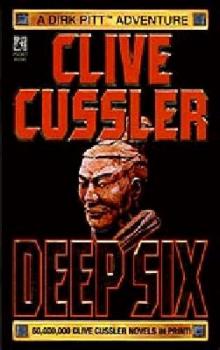 Deep Six
Deep Six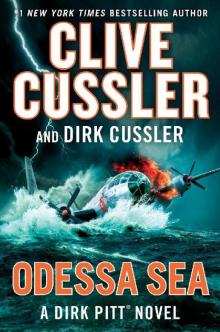 Odessa Sea
Odessa Sea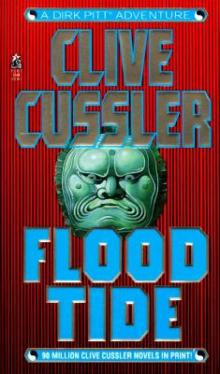 Flood Tide
Flood Tide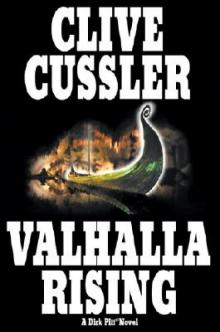 Valhalla Rising
Valhalla Rising Thriller 2
Thriller 2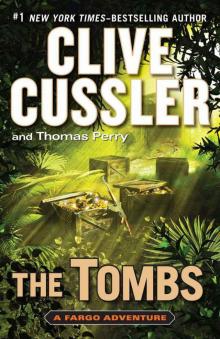 The Tombs
The Tombs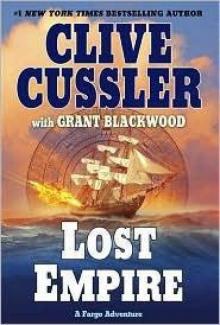 Lost Empire
Lost Empire The Gray Ghost
The Gray Ghost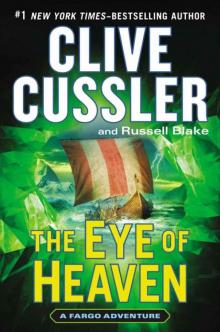 The Eye of Heaven
The Eye of Heaven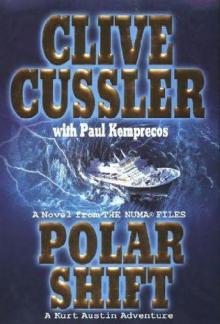 Polar Shift
Polar Shift The Kingdom
The Kingdom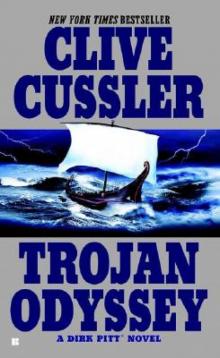 Trojan Odyssey
Trojan Odyssey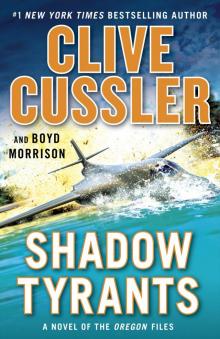 Shadow Tyrants
Shadow Tyrants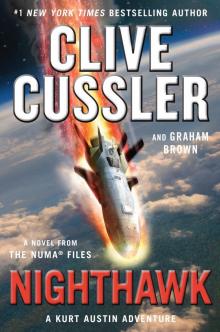 Nighthawk
Nighthawk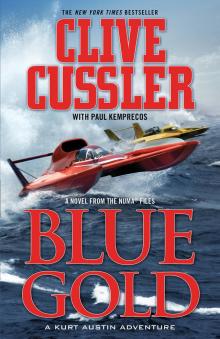 Blue Gold
Blue Gold Serpent
Serpent Lost City
Lost City The Gangster
The Gangster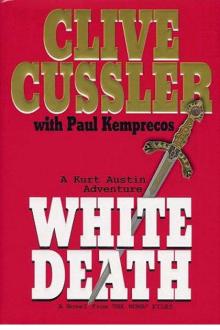 White Death
White Death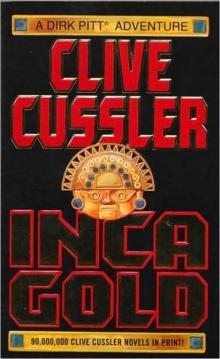 Inca Gold
Inca Gold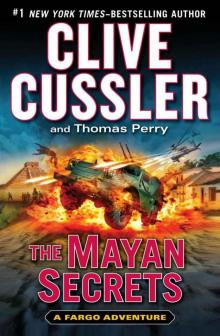 The Mayan Secrets
The Mayan Secrets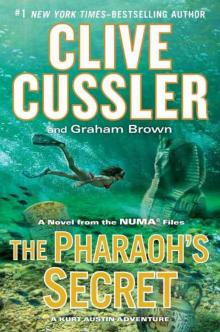 The Pharaoh's Secret
The Pharaoh's Secret The Emperor's Revenge
The Emperor's Revenge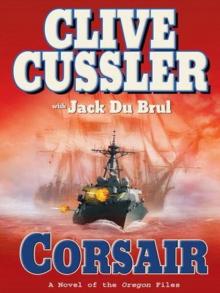 Corsair
Corsair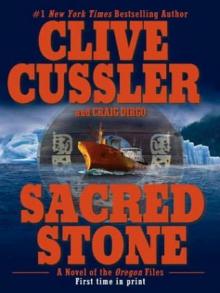 Sacred Stone
Sacred Stone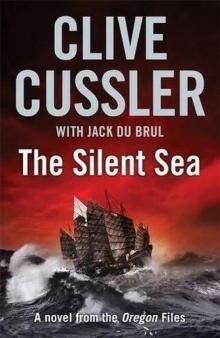 The Silent Sea
The Silent Sea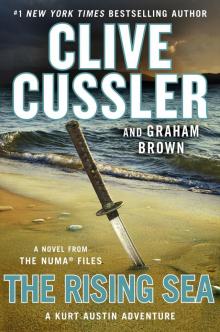 The Rising Sea
The Rising Sea Black Wind
Black Wind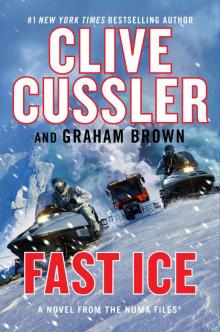 Fast Ice
Fast Ice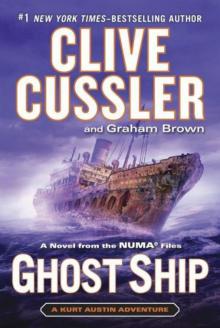 Ghost Ship
Ghost Ship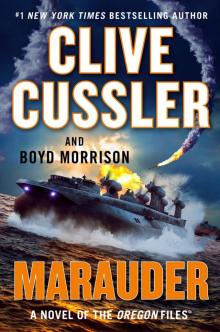 Marauder
Marauder The Thief
The Thief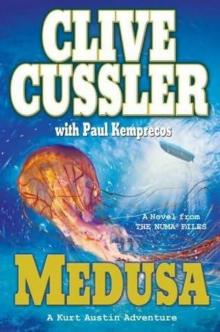 Medusa
Medusa Typhoon Fury
Typhoon Fury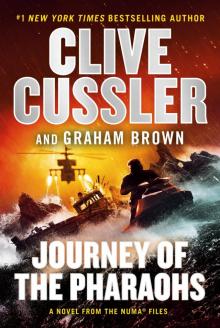 Journey of the Pharaohs
Journey of the Pharaohs The Navigator
The Navigator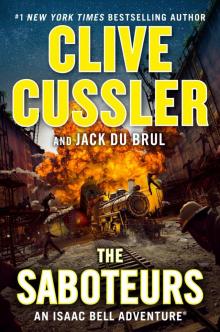 The Saboteurs
The Saboteurs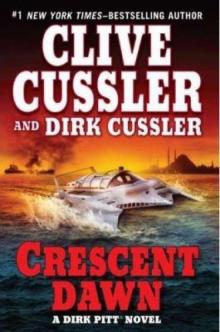 Crescent Dawn
Crescent Dawn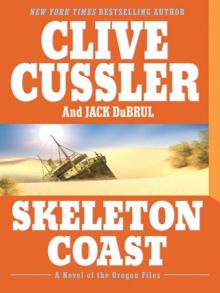 Skeleton Coast
Skeleton Coast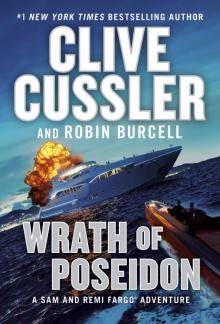 Wrath of Poseidon
Wrath of Poseidon The Mediterranean Caper
The Mediterranean Caper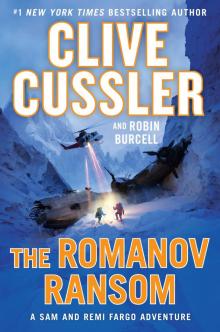 The Romanov Ransom
The Romanov Ransom Treasure
Treasure The Race
The Race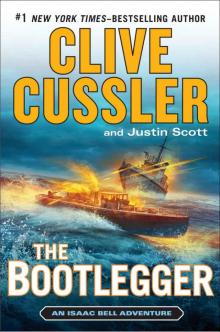 The Bootlegger
The Bootlegger Spartan Gold
Spartan Gold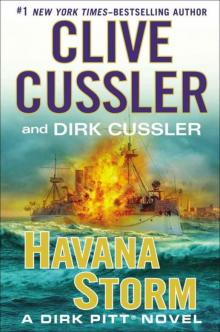 Havana Storm
Havana Storm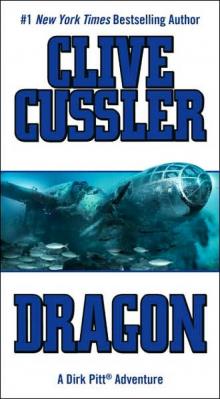 Dragon
Dragon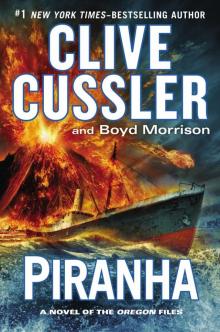 Piranha
Piranha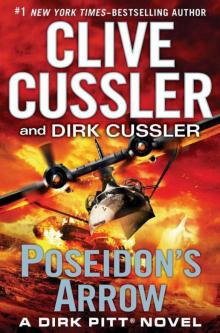 Poseidon's Arrow
Poseidon's Arrow The Cutthroat
The Cutthroat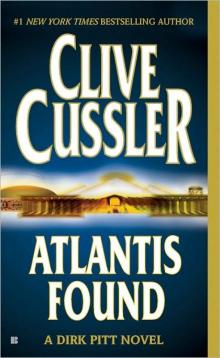 Atlantis Found
Atlantis Found The Jungle
The Jungle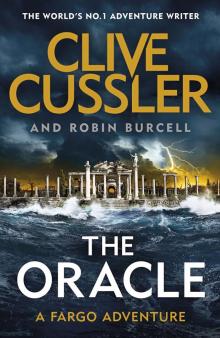 The Oracle
The Oracle Treasure / Dragon / Sahara: Clive Cussler Gift Set
Treasure / Dragon / Sahara: Clive Cussler Gift Set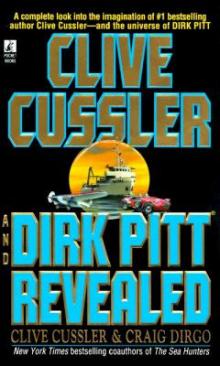 Clive Cussler and Dirk Pitt Revealed
Clive Cussler and Dirk Pitt Revealed The Sea Hunters
The Sea Hunters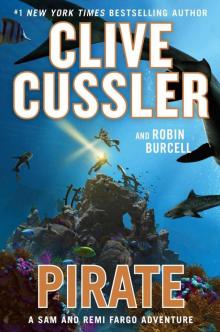 Pirate
Pirate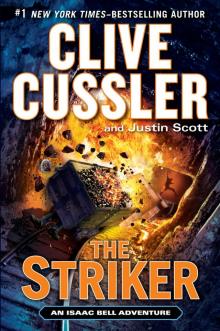 The Striker
The Striker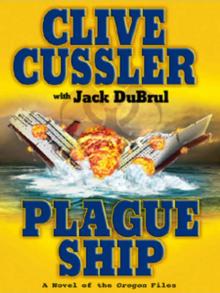 Plague Ship
Plague Ship The Wrecker
The Wrecker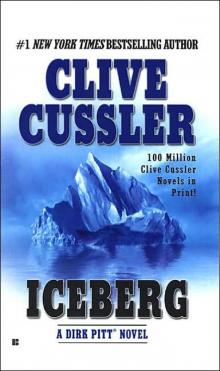 Iceberg
Iceberg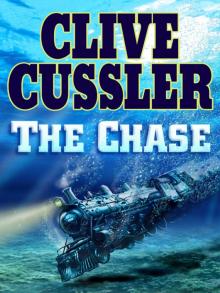 The Chase
The Chase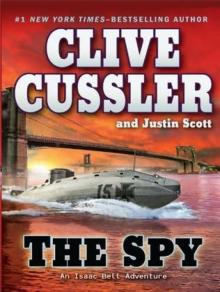 The Spy
The Spy Golden Buddha
Golden Buddha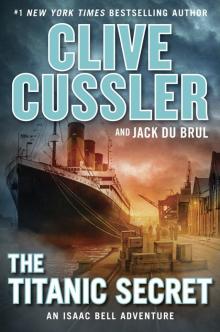 The Titanic Secret
The Titanic Secret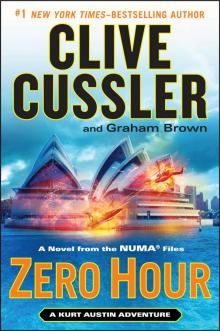 Zero Hour
Zero Hour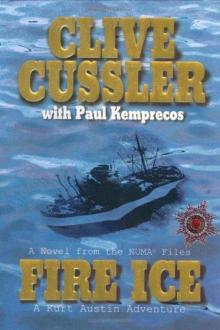 Fire Ice
Fire Ice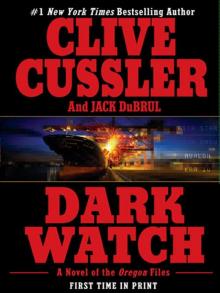 Dark Watch
Dark Watch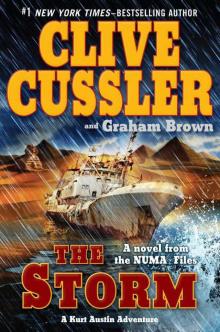 The Storm
The Storm The Assassin
The Assassin Vixen 03
Vixen 03 Arctic Drift
Arctic Drift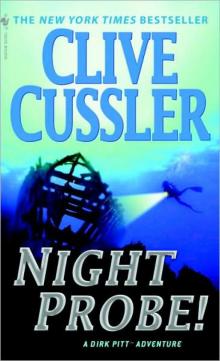 Night Probe!
Night Probe! Cyclops
Cyclops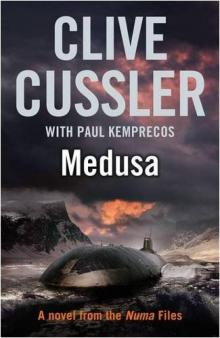 Medusa nf-8
Medusa nf-8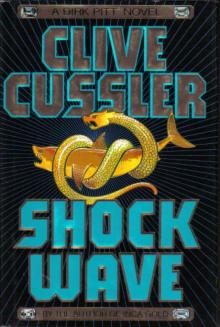 Shock Wave dp-13
Shock Wave dp-13 Marauder (The Oregon Files)
Marauder (The Oregon Files) Lost Empire fa-2
Lost Empire fa-2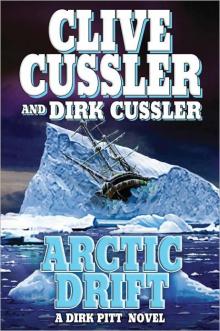 Arctic Drift dp-20
Arctic Drift dp-20 Dirk Pitt 22 - Poseidon's Arrow
Dirk Pitt 22 - Poseidon's Arrow Treasure of Khan dp-19
Treasure of Khan dp-19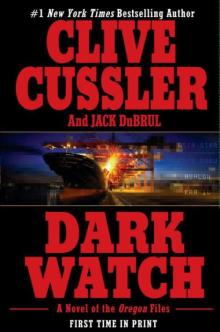 Dark Watch of-3
Dark Watch of-3 Devil's Gate
Devil's Gate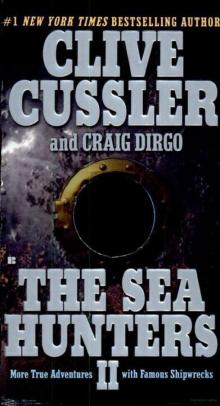 The Sea Hunters II: More True Adventures with Famous Shipwrecks
The Sea Hunters II: More True Adventures with Famous Shipwrecks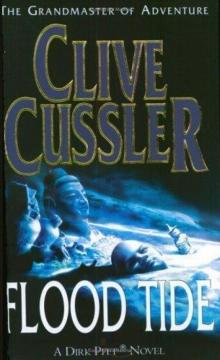 Flood Tide dp-14
Flood Tide dp-14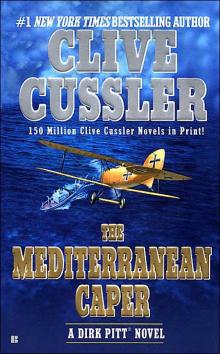 The Mediterranean Caper dp-2
The Mediterranean Caper dp-2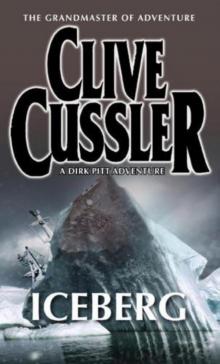 Iceberg dp-3
Iceberg dp-3 Sahara dpa-11
Sahara dpa-11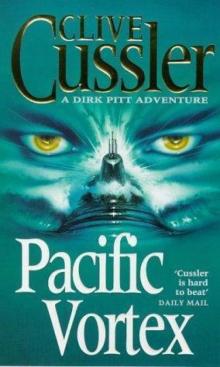 Pacific Vortex! dp-1
Pacific Vortex! dp-1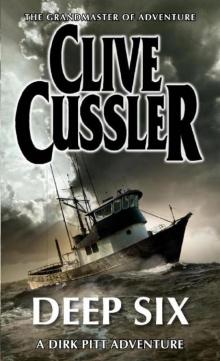 Deep Six dp-7
Deep Six dp-7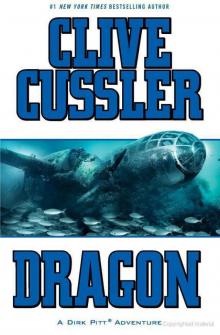 Dragon dp-10
Dragon dp-10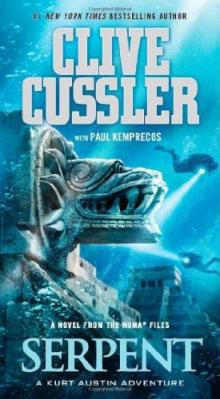 Serpent nf-1
Serpent nf-1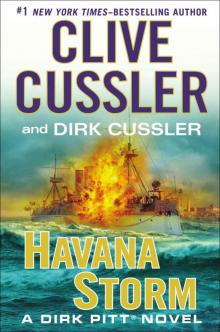 Havana Storm (Dirk Pitt Adventure)
Havana Storm (Dirk Pitt Adventure)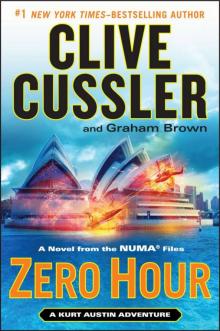 Zero Hour nf-11
Zero Hour nf-11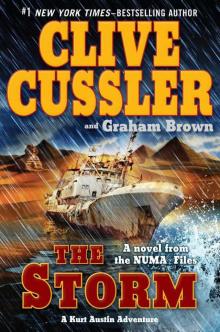 The Storm nf-10
The Storm nf-10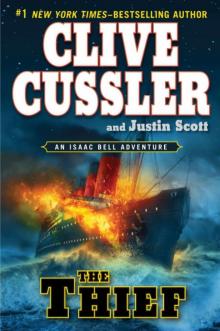 The Thief ib-5
The Thief ib-5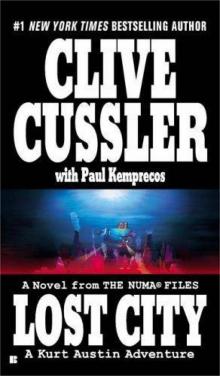 Lost City nf-5
Lost City nf-5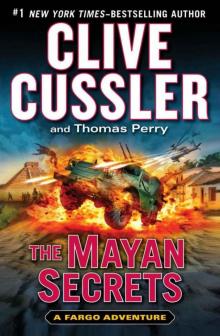 The Mayan Secrets fa-5
The Mayan Secrets fa-5 White Death nf-4
White Death nf-4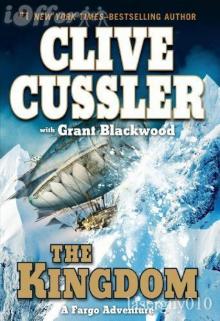 The Kingdom fa-3
The Kingdom fa-3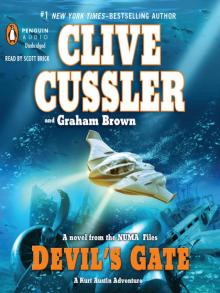 Devil's Gate nf-9
Devil's Gate nf-9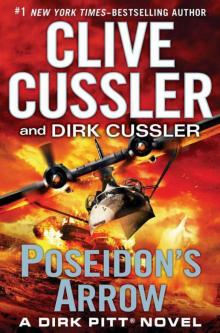 Poseidon's Arrow dp-22
Poseidon's Arrow dp-22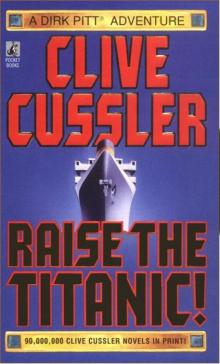 Raise the Titanic dp-4
Raise the Titanic dp-4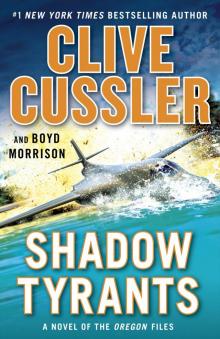 Shadow Tyrants--Clive Cussler
Shadow Tyrants--Clive Cussler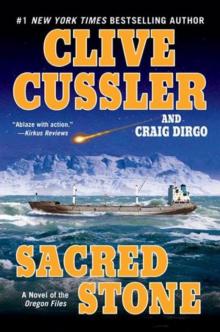 Sacred Stone of-2
Sacred Stone of-2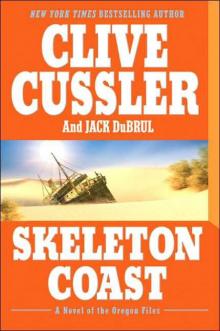 Skeleton Coast tof-4
Skeleton Coast tof-4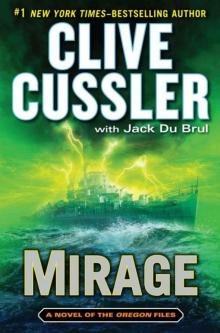 Mirage tof-9
Mirage tof-9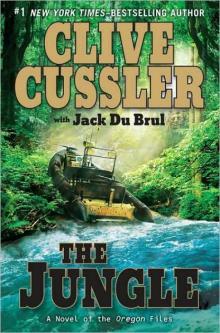 The Jungle of-8
The Jungle of-8 The Emperor's Revenge (The Oregon Files)
The Emperor's Revenge (The Oregon Files) Golden Buddha of-1
Golden Buddha of-1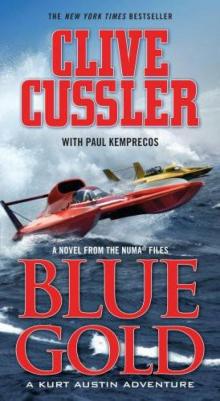 Blue & Gold
Blue & Gold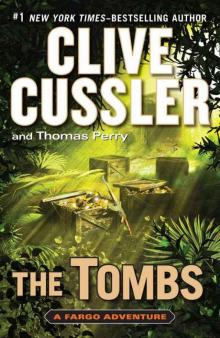 The Tombs fa-4
The Tombs fa-4 Inca Gold dp-12
Inca Gold dp-12 Treasure dp-9
Treasure dp-9 Atlantis Found dp-15
Atlantis Found dp-15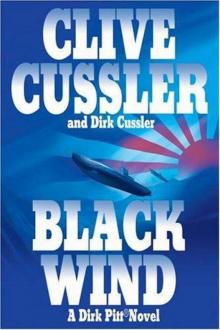 Black Wind dp-18
Black Wind dp-18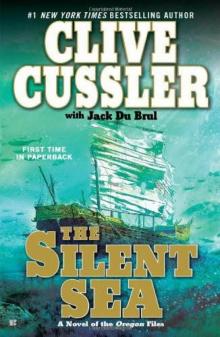 the Silent Sea (2010) tof-7
the Silent Sea (2010) tof-7 The Wrecker ib-2
The Wrecker ib-2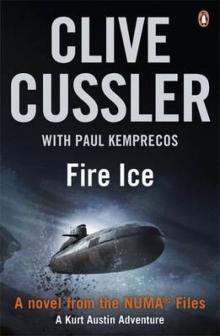 Fire Ice nf-3
Fire Ice nf-3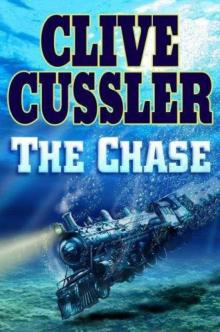 The Chase ib-1
The Chase ib-1 Sahara
Sahara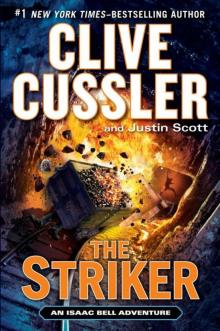 The Striker ib-6
The Striker ib-6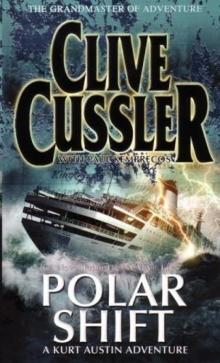 Polar Shift nf-6
Polar Shift nf-6 The Race ib-4
The Race ib-4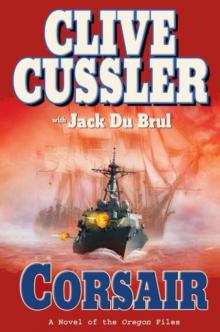 Corsair of-6
Corsair of-6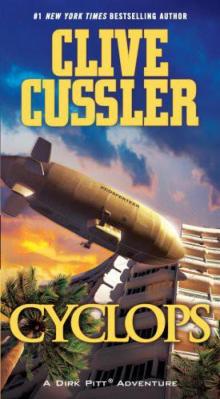 Cyclops dp-8
Cyclops dp-8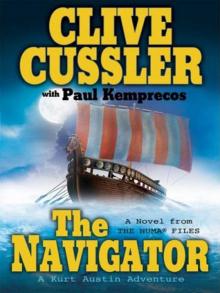 The Navigator nf-7
The Navigator nf-7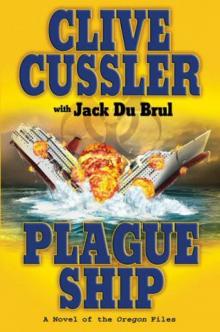 Plague Ship tof-5
Plague Ship tof-5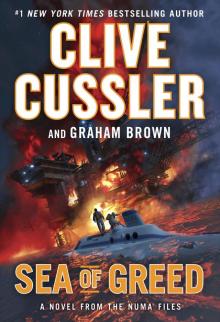 Sea of Greed
Sea of Greed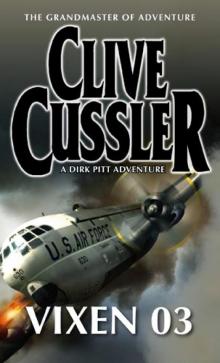 Vixen 03 dp-5
Vixen 03 dp-5 Thriller 2: Stories You Just Can't Put Down
Thriller 2: Stories You Just Can't Put Down